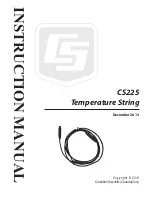
P a g e
|
21
Kakute F7
been allowed to rest at the end of a flight. If your batteries are consistently resting at below this level at
the end of a day of flying, then you might be shortening their lifespan at least a little.
mAh Drawn:
Although voltage is what ultimately determines whether a battery is being damaged, mAh
may be a better way of deciding when to land. Because voltage sags when you raise the throttle and
recovers when you lower the throttle, it can be hard to tell exactly how used-up the battery is. mAh is
like a “gas gauge” for your battery. It shows how much capacity you have consumed, independent of
other factors.
A good practice is to draw from a battery no more than about 80% of its rated mAh. So, a 1300 mAh
battery would be able to deliver about 1000 to 1100 mAh. With a healthy battery and an honest battery
rating, this will result in the battery resting at about 15.0 volts after flying. If you draw 80% of a battery’s
rated capacity and it is resting at higher than 15.0 volts, the manufacturer might have under-rated its
capacity. If the battery is resting at lower than 15.0 volts, the manufacturer might have over-rated its
capacity. Also, remember that batteries lose capacity as they age. A battery that consistently fails to
deliver 80% of its rated capacity without sagging below 14.0 volts might need retirement.
Current Sensor Calibration
The current sensor in your Kakute F7 has been set with a nominal calibration value. However, you may
be able to improve the accuracy by performing a more precise calibration. We recommend that you
record the mAh used at the end of your first few flights, then compare it to the mAh that your battery
charger puts back into the batteries. Then adjust the Current Scale in the Power And Battery tab to
compensate for any difference.
Here is an example:
•
OSD shows 1100 mAh Drawn at the end of the flight.
•
Charger shows 1000 mAh put back in to the battery.
•
1100 / 1000 = 1.10. The OSD is reading 10% high.
•
Current Scale works backwards from how you might
think. To make the OSD read lower, you make
Current Scale larger. Since the OSD is reading 10%
high, we need to INCREASE Current Scale by 10%.
This will cause the OSD to read 10% lower.
•
If the Current Scale was at 400, we will multiply it by
1.10 to add 10%, meaning the new value should be
440.
The mAh put back in by the battery will seldom perfectly match the mAh reported by the OSD, but by
taking several measurements and averaging the results, you can usually get it reasonably close.







































